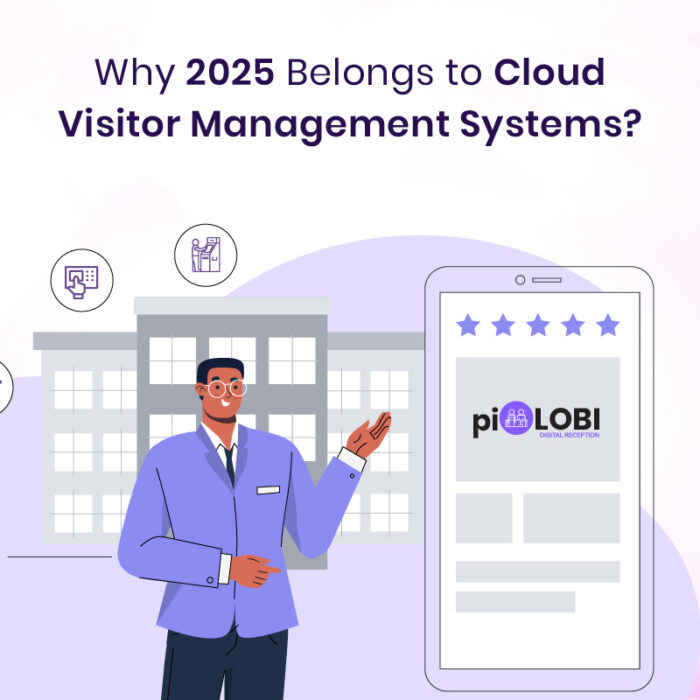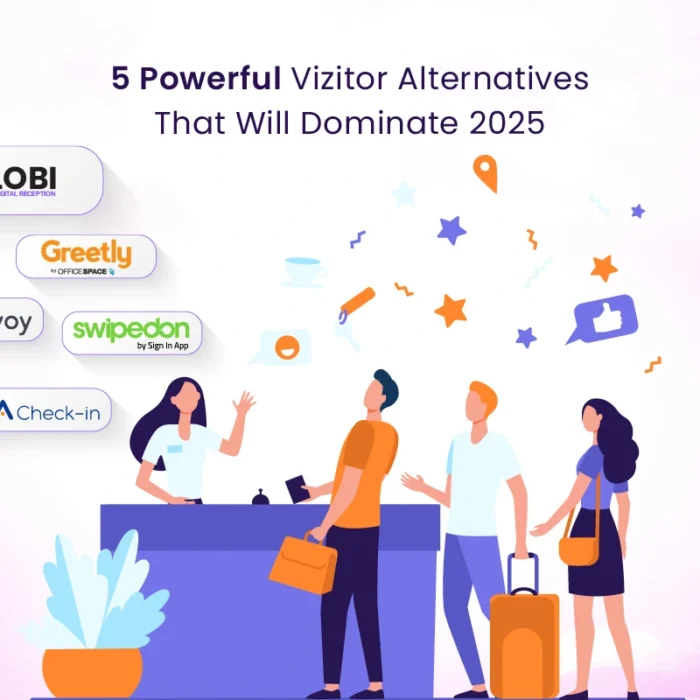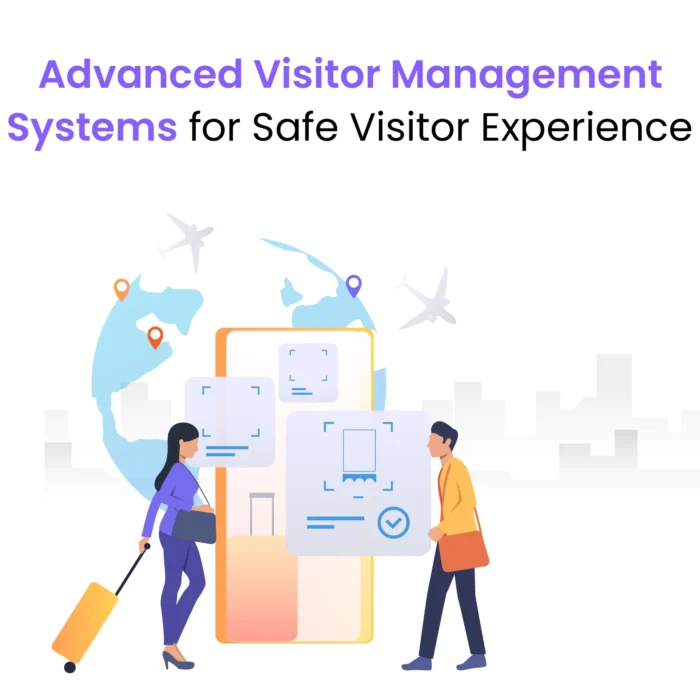
The 6 Types of Visitor Management Systems to Watch In 2025
Managing the visitors’ flow in any corporate office or company today is more than a matter of convenience. It’s all about looking into security, efficiency, professionalism, and creating a seamless experience.
Gone are the days when people used to manually register their name in logbooks, but today visitor management systems offer smart and automated solutions to streamline the process. This digital management system can create a seamless visitor experience.
However, the problem is that there are various types of VMS solutions available in the market – from paper logs, standalone software, and cloud-based systems to AI -driven security, so how do you know which one fits your needs?
Whether it’s a corporate office, school, college, hospital, or any event venue, choosing the appropriate visitor management system is crucial.
In this article, we will explore different types of visitor management systems, highlighting their features, benefits, and limitations. By understanding the various options available and the key factors to choose the right one, you will be able to make an informed decision and choose the right one that fits your organization’s goals and priorities.
1. Paper-Based Sign-In Systems
Despite advancements in technology, today still paper-based sign-in systems remain common, especially in smaller companies and startups that get very little visitor traffic. These visitor logbooks are very straightforward and inexpensive, where visitors manually enter their details.
However, they offer minimal security, as anyone can get the visitor information simply by flipping through the pages. Maintaining accurate records is also very difficult, as illegible handwriting or incomplete information can lead to errors, making it an unreliable solution for those organizations that want to track visitors’ data for the auditing process.
It also doesn’t have the capacity to alert security once a visitor arrives, which means the process is very slow and inefficient.
While there are organizations that still depend on these systems, there are many that have moved forward and are using sophisticated tech-driven visitor management software that offers good security and efficiency.
2. On-Premises Visitor Management System
This type of visitor management system is a bit of an upgraded form of old paper-based solutions. In these systems, software is installed directly on a company’s server or computer, which often requires dedicated hardware like tablets or kiosks for visitors to check-in.
The best thing about the on-premises visitor management system is that it can be customized based on the company’s unique requirements and can be integrated with other security systems such as CCTV, or badge printing services.
A major benefit of these systems is the level of control that they provide. Since all the relevant data is stored on-site, businesses that maintain strict privacy or compliance may need these types of visitor management systems.
However, the main drawback of this visitor management system is that it is very costly to maintain and requires regular updates and IT support to make sure that everything functions smoothly.
In addition to this, these types of management systems may not be as flexible as cloud-based options, especially when it comes to scalability or remote access.
Although this type of management system is suitable for businesses with a strong IT infrastructure and specific security requirements, it may not be suitable for those companies that are looking for scalable and low-maintenance solutions.
3. Cloud-Based Visitor Management Systems
These days, cloud-based visitor management systems are becoming very popular because of their scalability, flexibility, and ease of use. The main working module of these systems is that they store visitor data on secure cloud servers. This means businesses can directly access and manage to take out important information from any device with an internet connection.
This makes them most suitable for those organizations that have offices in multiple locations or those looking for a system that can grow with their business.
The best thing about cloud-based systems is that they offer real-time updates and can often be integrated with other visitor management software such as Building Management Systems (BMS) and Customer Relationship Management (CRM) tools. This helps companies to streamline visitor management across all departments, improving overall efficiency.
Another thing about cloud-based systems is that they reduce the need for on-site maintenance and IT support, as software updates and security patches are handled by the service provider.
This makes cloud-based systems an attractive option for business owners who want to minimize the burden of internal IT teams.
4. Mobile Application-Based Management Systems
This type of visitor management system is designed particularly for businesses that prioritize mobility and convenience. Mobile app-based systems allow visitors to sign in through a smartphone or tablet, either through a device provided by the company or by using their own personal phone.
By doing this, they no longer need any physical kiosks or reception desks, thus making app-based systems an excellent choice for modern, flexible workplaces or businesses with a high volume of visitors.
One of the key advantages of mobile app-based systems is that they have the ability to streamline the check-in process. Visitors can register in advance through the app, reducing wait times and enabling staff to prepare for their arrival. There are even systems that offer contactless sign-ins, further improving convenience and security.
Now, although mobile app-based systems are convenient, they are not at all suitable for every company out there. Businesses that have customers who are less familiar with technology may find these systems frustrating as they may create confusion.
Mobile app-based systems depend on strong internet connectivity and therefore, they may not perform well in those areas where there is limited network coverage.
5. Web-Based Visitor Management systems
This type of visitor management system operates through a browser interface, which means they can be accessed from any device that has internet access, including desktops, tablets, or smartphones.
Just like cloud-based systems, web-based systems too offer real-time access to visitor data, allowing companies to manage multiple locations or run remote offices efficiently.
Web-based management systems typically offer the same benefits as mobile app-based systems or cloud-based visitor management systems, such as streamlined check-ins, pre-registration options, integration with other tools, etc.
The best thing about web-based systems is that they are often user-friendly and require very short training for staff, thus they are an attractive option for businesses looking to implement a visitor management system quickly.
However, just like other types of visitor management systems these web-based management systems have a potential drawback, and that is that they completely depend on internet access. Therefore, companies located in areas with unreliable internet may experience interruptions or delays when using this management system.
Nevertheless, for businesses with good internet infrastructure, web-based visitor management systems provide a flexible and scalable solution.
6. Biometric Visitor Management Systems
Biometric visitor management systems use fingerprint scanning, facial recognition, or other biometric data to identify visitors. These systems offer a high level of security and are often used in facilities where tight access control is required, such as data centers, laboratories or high-security government buildings.
The best thing about biometric systems is that they are virtually impossible to forge, providing a high level of security over traditional ID cards or badges. Another best thing is that they allow for fast, efficient check–ins as visitors can simply scan their biometric data and take entry onto the premises rather than entering personal information manually.
However, the main drawback is its cost, which prohibits smaller businesses from using them, and some visitors may not feel good sharing their personal information as they are very concerned about their privacy. But despite these small challenges, biometric systems offer a cutting-edge solution to many organizations.
Final Thoughts on Visitor Management Systems
A visitor management system has evolved simply from a convenience to a necessity for modern companies striving to balance security, efficiency, and professional visitor experience.
With numerous types of visitor management systems available, starting from cloud-based platforms to biometric systems, choosing the right one requires a thorough understanding of your organization’s unique needs, expectations of visitors, and, finally, operational goals.
By giving importance to ease of setup, data privacy, security and stakeholder engagement, you can select a visitor management system that will not only meet your organization’s goals but will also enhance its capabilities.










